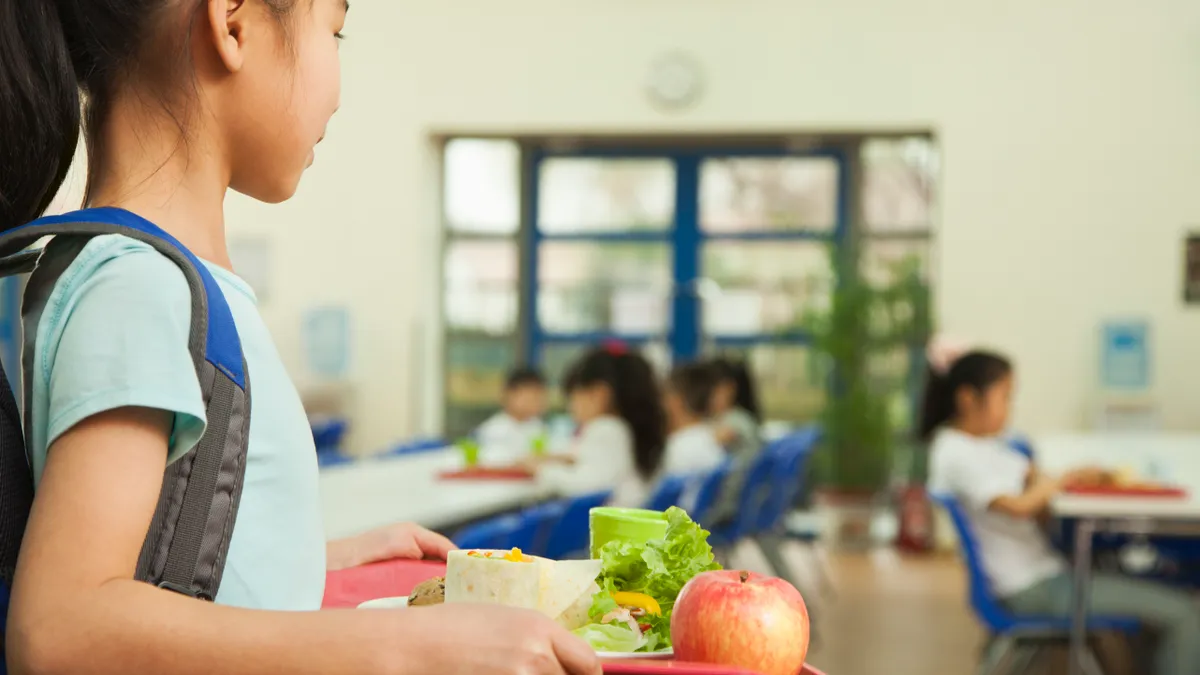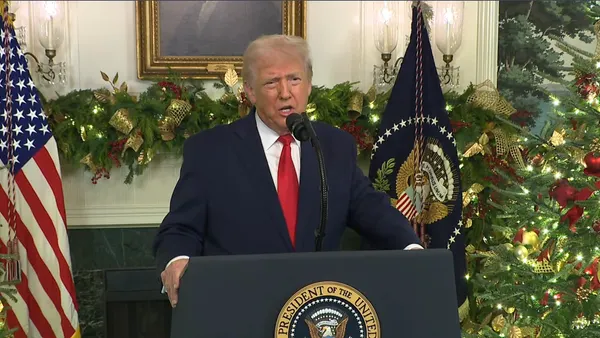Dive Brief:
- The U.S. Department of Agriculture has launched a group of summer nutrition services for children known as the SUN Programs as part of an effort to combat food insecurity and malnutrition among students when they are typically out of school.
- The SUN Programs — “SUN” being short for “summer nutrition” — include SUN Bucks, formerly known as the Summer Electronic Benefit Transfer, which provides $120 per eligible school-aged child in total for the purchase of groceries during the summer months.
- The initiative also includes SUN Meals, which allows for any child age 18 or under to visit a designated site in their community to eat free meals and snacks. In more rural areas where group meal sites are unavailable, families can pick up free summer meals for their children or have them delivered through the SUN Meals To-Go program.
Dive Insight:
In the first year of the permanent Summer EBT program, now known as SUN Bucks, 32 states and the District of Columbia are currently participating. Another five states plan to participate. The USDA has found these kinds of summer grocery benefits can drive down child hunger by 33%.
Nationwide, there are 30 million children eligible for the SUN Bucks program if every state were to approve and leverage the program, said Stacy Dean, deputy under secretary of the USDA’s Food, Nutrition and Consumer Services. Depending on the state, families who qualify for the benefit will either automatically receive the funds or will have to apply for it.
“We have really rigorous evidence that shows the SUN Bucks can reduce severe child hunger by a third, and that kids with that benefit eat more whole grains, dairy and fruits and vegetables in the summer,” Dean said.
Considering states only had five months to opt in and plan for rolling out SUN Bucks in their communities, Dean said, there is an overwhelming number that want to provide this benefit. States are also required to cover 50% of the costs to administer the program in order to enroll.
“That was a lot to pull off and yet, still, all of these states stepped up and said they want in,” Dean said. “The number one issue for the states that didn’t do it is just they needed approval from their legislature, they needed some resources to do it, so we’re seeing a number of states that are seeking that approval now, and they’ll be ready to go next summer.”
Meanwhile, Dean added that there were still a handful of states where policy officials weren’t “aligned” with the USDA program, but she hopes that once those states see how successful other programs operate, they will want to join in the coming years.
To make sure eligible families are aware of benefits they will likely automatically receive, schools can use the USDA’s outreach toolkit for sharing the locations that serve SUN Meals on social media and how families can find more information about SUN Bucks, Dean said.














